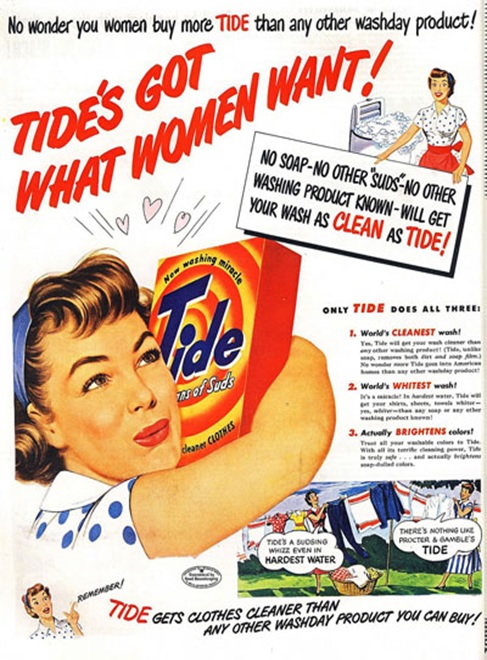Tide Assessment.
Briefly explain the three positions audiences can take when viewing a text according to Stuart Hall.
The three positions an audience can take are: stereotyping. Stereotyping can be a form of representation which reduces people to few characteristics. Stuart Hall's theory was that representation of people in text/media is not a true representation of who they are. Stereotyping trends often occur when there are inequalities of power. His other theories were the idea that representation is the production of meaning through language, with language defined in its broadest sense as a system of signs and that the relationship between concepts and signs is governed by codes.
Who is the target audience for tide and how has tide tried to appeal to this audience?
The target audience for tide are middle aged woman who are housewives. We can infer this by the way a woman in that age range is placed on the front of the advert. Tide has tried to appeal to the audience by making her seem happy about that fact she owns tide. Her happy facial expressions and the hug she gives to the product is a symbolic code which indicates to how much she loves using tide and enjoys doing housework. The love hearts that are placed near the woman enforce this emotion. This creates a semantic code of love. This makes the audience feel as if they were to buy the product they would also feel these emotions. The advert uses direct address to appeal the the audience. The use of the word 'You' makes the audience feel as if the advert is speaking to them personally. This creates a personal connection with the audience.
How are woman represented in the Tide advert? Discuss how the representation offered fit the context.
The woman in this advert is wearing a full face of makeup, and stereotypical clothes that a woman would wear in the 1950s. Her hair is pulled back, which indicates how hard she is working to fulfil her housewives duties. This creates the representation of what the 'perfect' housewife should look like/should be. Again, her happy emotions create a symbolic code of happiness to the audience and make them believe that if they bought the product they would feel this too. This is representing the fact that every 'perfect' housewife should love doing the house work and should work hard to complete it. The fact there is only a woman on this poster is reinforcing the stereotype woman should be housewives, whereas men shouldn't. The use of the phrase 'Tide's got what woman want' is also enforcing this as it is excluding men entirely and acting as if only woman are supposed to do the housework. This phrase is an enigma code is it is leaving the wider audience questioning what it really is which woman want. This advert is trying to normalise the fact that only woman should be the ones doing the housework and men should not.
In what ways would the historic audience for Tide and a contemporary audience interpret this advert differently.
In the 1950s it was common for women to be the ones to complete the housework whereas the men do not. This advert would have just been normalised and no one would have thought anything of it as this was considered their normality. Also, many would have agreed with it. In that generation feminism was not as big as it is now. People may have been afraid to speak up as they would have been scared for the consequences/actions faced after. Whereas, in this generation now days feminism is a much greater movement and people are not afraid to speak up about it. Most of our generation currently would not agree with this advert as it reinforces stereotypes and tries to normalise something which shouldn't be. We can see this clearly by the fact there are only women on the advert, and there is not a single mention of men. It also clearly says ' What women want' and men are excluded entirely. This is wrong as it shouldn't be just woman doing housework and it definitely should not be considered to be the normality.


Comments
Post a Comment